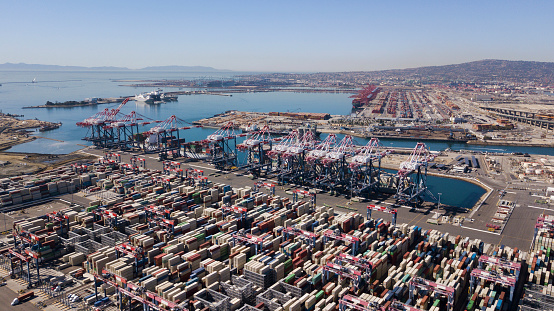- Head haul freight rates remain high despite some slowing after surging more than 5.5 times in the past 18 months to February 2021 level, report says
- Transport Intelligence’s Global Ocean Freight Rates Index shows slowing rate hikes across all lanes and even some falling rates on US West Coast, triggered by strong consumer demand
- High ocean freight rates not due to increases in demand, but the dysfunction of network of container shipping, rise in the container availability index shows, the report says
Head haul freight rates in global ocean shipping remain high despite some slowing after surging more than 5.5 times in the past 18 months to the February 2021 level, Transport Intelligence says in a report.
The Ti Global Ocean Freight Rates Index shows slowing rate increases across all lanes and even some falling rates on routes into the US West Coast, the report, “Ocean Freight Rate Tracker,” said.
The report said high ocean freight rates today were not due to gross volume increases in demand, but the dysfunction of network of container shipping as indicated by the rise in the container availability index.
High levels of consumer demand amid resurgent economic activity triggered the rate explosion following a slump due to the coronavirus pandemic. Backhaul rates are also being pushed up by fuel prices, container shortages and port congestion, the report said.
A headhaul is defined as the freight rate that is the higher of the round-trip origin and destination zip code pairing. A backhaul is the lower of the rates in a round-trip origin and destination pair.
On the transpacific route, head haul rates on lanes from China/East Asia to the US West Coast are at US$15,218 per 40ft container, more than 14x the price of the back haul route, the report said.
During 2021, head haul rates rose drastically with February 2022 rates shooting up 175.6% year on year, while rates on the back haul climbed 30.2% year on year. The report said head haul rates on the lane reached an all-time high in September 2021 at US$19,736 per container.
“While this was followed by three consecutive months of falling rates, the start of 2022 has been marked by two consecutive months of rate increases,” the report said.
The Covid-19 pandemic initially caused a sharp fall in the volumes of containers passing through US West Coast ports, but volumes recovered and have been around 60% above March 2020 volumes from mid-2020 onwards.
Steadily rising bunker prices in the Asia Pacific region over the last year took January 2022 rates 30.2% higher than in March of 2021, after two months of decline at the end of 2021, the report said. It now expects prices returning to an upward trend with a 6.1% increase seen in January 2022.
North American West Coast congestion was the highest of all regions in January 2022 as high imports from Asia led backups at the end of 2021. Average wait times at the Port of Los Angeles were reported to be 17 days with 48 vessels waiting at anchor and berth on average in November.
Congestion fell 35.5% by mid-February from January 1, aided by a pause in Chinese production during the Lunar New Year paring the average number of vessels waiting at anchor and berth to 21.
Head haul rates on the China/East Asia-Europe lane this month sit at US$14,728, up 78.9% year on year, while backhaul rates are US$995, down 33.3%. In contrast, rates a year ago did not show a significant drop in the final months of 2021.
While the direct risks of further pandemic-related disruptions appear to be receding in Europe and North America, vaccine rollouts and lifting of restrictions are uneven globally. The reports cited China, where Covid restrictions caused disruptions at ports and in Shanghai, Ningbo, Xiamen and Tianjin in 2022.





